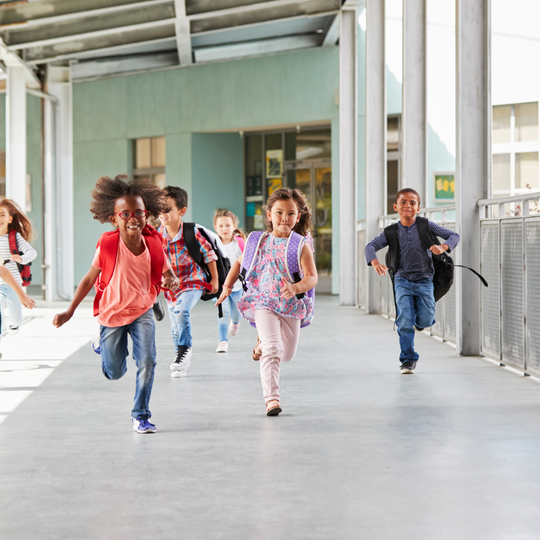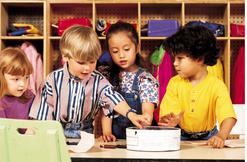Parents between the chairs: Should the children go to daycare or school?
Use freedom and/or limit risks
Should the children go back to daycare or school now that they are largely open again? What can parents and families do to do something for the psychological balance on the one hand and to keep the risk of new infections as low as possible on the other?

For most parents, the question now arises as to whether or not they should use the open daycare centres and schools. The decision is difficult, as there are very different aspects to be weighed up.
On the one hand, there is health protection and the goal of keeping the risk of infection as low as possible. The risk is higher when children go to daycare or school. They meet more children in the group or class. And they often travel by bus or train. This increases the risk of infection, even if the children put on the mask.
On the other hand, it is about participation in educational and learning processes as well as about the reduction of psychological stress among children, adolescents and/or parents. Many children and adolescents feel very stressed by the lockdown, closed daycare centres and schools, hardly any contact with friends, etc., and parents also feel stressed by the problems of reconciling family and work, the permanent squatting on top of each other, etc. These reasons speak in favour of children and adolescents returning to daycare centres or schools. These reasons speak for children and adolescents to go back to daycare or face-to-face teaching at school.
Making a decision together with the child
Parents should discuss the question of whether the children go to daycare or school together with the children and bring about a joint decision. This is an important step towards taking children seriously and integrating them into family structures as equals.
Take precautions
Since the decision will probably be made most of the time for the children to go to daycare or school, I would like to suggest a few precautions to keep the risk of infection low:
1. Bringing children to school: Bring the children to school and if possible do not let them travel by buses and trains. Even if this is not exactly ecological and means effort for you.
2. Together with other parents: Share the task with other parents in your area, if possible.
3. Take advantage of alternating classes: If you can influence the design of the alternating lessons, vote for the (two-) daily alternation. This means that the children go to school every other day. This reduces the frequency of how often the children have to go to school. It also means they are on the bus and train less on the way to or from school. And it also reduces the burden on you to get the kids to school.
4. Keeping in touch with school: It also has the advantage of maintaining contact with the school and allowing children to study at home for the day when they are not at school, provided with learning materials and assignments. Many teachers report that the children usually cope very well with this.
5. Use rapid tests: Use the rapid tests provided - get tested twice a week if possible, even if the daycare or school may only test children once or not at all. Also insist that the daycare centers or schools test regularly. Even if these tests only provide security for the moment, if it is negative, it also means that you can be relatively sure that there is no one in the daycare group or class who is already infected.
6. Arrangements with the professionals: Discuss with the nursery or class management how it can be ensured that the frequency of contact is as low as possible. Is it possible that - if possible - it is always the same teacher who teaches your children? In the nursery, the group sizes should be limited and mixing of the groups should be avoided as far as possible.
Published on
Topics
Articles on the topic
-
How do I find a school place for my child?
Depending on the state and type of school, different things need to be...

-
Childcare - how does it work in Germany?
The path from application to daycare place is simple and complicated at...

-
Controversy: open schools or close schools?
Politicians should react now to slide unprepared into a forced closure....

-
Corona pandemic severely disadvantages children and young people - but there is no "Corona generation"
This is a core finding of the anthology "Generation Corona? How young...

-
What to do after the Easter holidays? - Part 2: Final exams
An overview of the regulatory diversity

-
Kitas and schools in a state of flux
Update from 9.4.2021 on the current regulations
